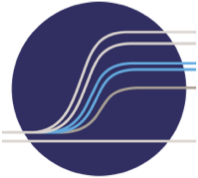FGFR3 Inhibitor
LOXO-435
- Type of Alteration(s)Point mutations*Alteration(s) of Interest †FGFR3 R248C
FGFR3 S249C
FGFR3 G370C
FGFR3 Y373CMethodology
Key Considerations
 NGS (Tissue)
NGS (Tissue)- Suitable for broad-based genomic profiling that includes targets in addition to FGFR3
- Full coverage of FGFR3 gene is preferred over hotspot sequencing
 NGS (cfDNA)
NGS (cfDNA)- Useful when tissue biopsy sample is limited/unavailable
- Higher false negative rate than tissue-based NGS testing
 PCR-based
PCR-based- Will detect selected mutations
*Point mutations occur at higher frequency (15-20%) than fusions (2-3%)†List not exhaustive of all activating alterationsReferences
- Robertson AG, et al. Cell. 2017;171(3):540-556.
- TCGA Research Network. Nature. 2014;507(7492):315-322.
- Nassar AH, et al. JCO Precis Oncol. 2018;2:PO.18.00013.
- Type of Alteration(s)Gene fusions*Alteration(s) of Interest †FGFR3-TACC3
Methodology
Key Considerations
 NGS (Tissue)
NGS (Tissue)- Suitable for broad-based genomic profiling that includes targets in addition to FGFR3
- Full coverage of FGFR3 gene is preferred over hotspot sequencing
- Assay should minimally cover exons 17 and 18 to ensure detection of most common fusions
- RNA-based NGS is most suitable for fusions
 NGS (cfDNA)
NGS (cfDNA)- Useful when tissue biopsy sample is limited/unavailable
- Higher false negative rate than tissue-based NGS testing
 PCR-based
PCR-based- Will detect known fusions but may miss novel FGFR3 rearrangements
*Point mutations occur at higher frequency (15-20%) than fusions (2-3%)†List not exhaustive of all activating alterationsReferences
- Robertson et al. Cell 2017;171(3):540-556
- TCGA Research Network Nature 2014;507(7492):315-322
- Nassar et al. JCO Precis Oncol 2018;16(2)
- Type of Alteration(s)Amplification/OverexpressionAlteration(s) of InterestFGFR3 gene, FGFR3 mRNA, FGFR3 protein or its ligands
Methodology
Key Considerations
 IHC
IHC- Directly measures FGFR3 protein expression
- Provides spatial information
- Short TAT
- Requires pathologist training or central testing
 RNA-ISH
RNA-ISH- Detects FGFR3 mRNA overexpression
- Short TAT
- Requires pathologist training or central testing
 NGS (Tissue)
NGS (Tissue)- Detects FGFR3 mRNA overexpression
- Short TAT
- Requires pathologist training or central testing
 PCR-based
PCR-based- Detects FGFR3 mRNA overexpression
- Sensitive
- Does not provide spatial information
References
- Ellinghaus P et al. Cells. 2022;11(19):3180
or visit www.clinicaltrials.gov for more information on this trial
This website was commissioned by Lilly Medical and is indicated to be used by HCPs for medical, scientific, and educational purposes.
The safety and efficacy of the agents for uses under investigation have not been established. Pipeline molecules may not receive regulatory approval and become commercially available for the uses being investigated. The information provided about new molecules being studied is for scientific information exchange purposes only with no commercial intent.
This information is current through .
© 2024 Lilly USA, LLC. All rights reserved. This site is intended for US Healthcare Professionals only.
Other product/company names mentioned herein are the trademarks of their respective owners.
